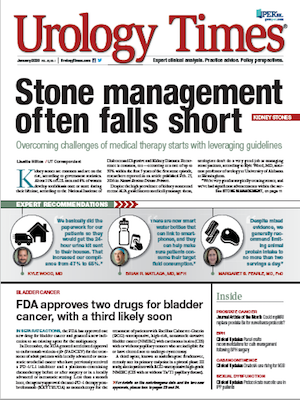Publication
Article
Urology Times Journal
Biofeedback training code deleted, replaced with time-based codes
Author(s):
"By creating time-based codes, one can most accurately describe and be reimbursed for the amount of time and effort spent face to face with an individual patient," writes Jonathan Rubenstein, MD, and Mark Painter.
mrmohock - stock.adobe.com


Jonathan Rubenstein, MD

Mark Painter
I heard that coding for biofeedback training changed on Jan. 1, 2020. Can you explain?
You are correct. CPT code 90911 (Biofeedback training, perineal muscles, anorectal or urethral sphincter, including EMG and/or manometry) was deleted on Jan. 1, 2020. It was replaced with two new time-based codes: CPT codes 90912 and 90913.
CPT code 90911 was created in 1994. It was felt to be potentially mis-valued, as biofeedback training has evolved and is not a one-size-fits-all procedure; rather, the amount of time that is needed per biofeedback session varies per patient and per session. The reason that a time-based code was chosen was that it would then align with most other physical therapy and physical therapy-type codes, which similarly may vary per patient and per session. By creating time-based codes, one can most accurately describe and be reimbursed for the amount of time and effort spent face to face with an individual patient.
Also see - Cystoscopy plus patient discussion: Can –25 modifier be used?
CPT code 90912’s description reads: biofeedback training, perineal muscles, anorectal or urethral sphincter, including EMG and/or manometry, when performed; initial 15 minutes of one-on-one physician or other qualified health care professional contact with the patient. By comparison, CPT code 90913 is an add-on code to “describe each additional 15 minutes” of one-on-one physician or other qualified health care professional contact with the patient. Note that CPT code 90913 must be used in conjunction with code 90912; it cannot be billed alone. Please also note that the time is based upon one-on-one face-to-face time, so there should be no overlap with other patients.
Send coding and reimbursement questions to Jonathan Rubenstein, MD, and Mark Painter c/o Urology Times, at urology_times@mmhgroup.com.
Questions of general interest will be chosen for publication. The information in this column is designed to be authoritative, and every effort has been made to ensure its accuracy at the time it was written. However, readers are encouraged to check with their individual carrier or private payers for updates and to confirm that this information conforms to their specific rules.
































